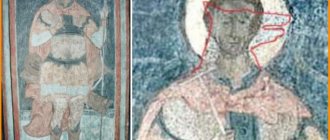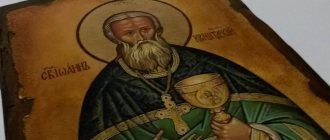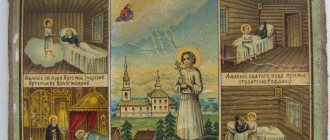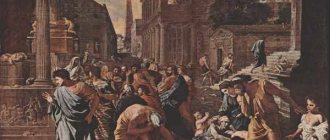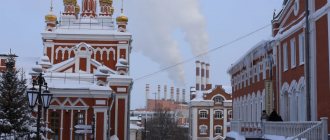St. John of Rila is for Bulgaria what Sergius of Radonezh is for Russia: the most beloved, most revered, most respected saint, the intercessor of his native land and the entire Bulgarian people. And therefore the monastery, once founded by Rila in one of the most picturesque corners of the Rila mountain range in the southwest of the country, is the main place of pilgrimage in Bulgaria...
On water as well as on dry land
Every year, tens of thousands of tourists climb the Rila Mountains - for trekking, for the opportunity to swim in crystal clear glacial lakes, for the views that will take your breath away... But 10 centuries ago, John of Rila was not looking for beauty here, but solitude. Although his ascetic heart must have been touched by the snow-capped peaks and the pristine perfection of nature, as if it had just been created by the Lord. This was exactly the place he needed to renounce worldly temptations and devote his life to God. The future patron of the entire Bulgarian people was born in 876 in the village of Skrino, not far from the city of Sofia, which was then called Sredets. John's parents died when he was still just a child. And the boy was forced to go to work as a shepherd for a rich man. He managed a large herd alone, but one day he lost a cow and a calf, for which the owner severely beat him. In tears, the child turned to God to help him and went on a search. And the rich man secretly went to follow him. The loss was found on the other side of the Struma River. Apparently, the cow and calf crossed the river where it was shallow, but then moved far away from the ford. And now the calf was unable to cross to the other side - the water was too high for him. Seeing this, John took off his outer clothing, laid it on the ground, and, having once again prayed to God and made the sign of the cross over the water, he stepped into the river and walked along it like dry land. On the other shore, he picked up a calf that was twice his weight and returned with it, still walking lightly along the water surface. The owner, who saw this miracle, realized that he was dealing with the messenger of the Lord on earth: he generously rewarded John and released him on all four sides. The boy could have lived happily ever after, but instead he gave away his last property and left his native village forever...
Who is John of Rylsky?
Venerable John of Rila is one of the great ascetics of Orthodoxy in Bulgaria. According to legend, he was born in 876 in the village of Skrino, Sredets region (ancient Sredets is currently the capital of Bulgaria, Sofia). Very early the boy became an orphan and went to work as a shepherd.
Question answer
What is the survachka that journalists brought as a gift to Putin?
As the legend tells, one day the rich man for whom he worked beat the boy because he lost a cow and calf. John cried and prayed for a long time for God to help him. When he found a cow with a calf, the water in the Struma River rose greatly. The young shepherd prayed, put his outer garment on the water, drew a cross on it, took the calf in his arms and crossed with it to the other side of the river. The rich man, hiding in the forest, was horrified when he saw this miracle, and, having generously rewarded the boy, released him from his house. Having left the rich man's house, John distributed all the reward to the poor, because he decided to become a novice in the monastery of St. Demetrius. There he learned literacy, reading and writing. The boy studied the Holy Scriptures and also read many liturgical books.
After some time, John took monastic vows and retired to the forest thicket, where he settled in a hut woven from brushwood. One day he was attacked by robbers, and he was forced to move to a desert area. He set up his home in a deep and deserted cave, and 12 years later he went to live in the Rila Mountains (today better known as the Rila Mountains). John walked along the slopes of the Brichebora, Tsarev and Elenin mountains until he settled in a place called Golets. He constantly prayed, atone for his sins. Seeing such patience, the Lord grew beans for John, which the hermit ate for a long time. As the legend goes, he once fed beans to the shepherds. One of them hid a fair amount of grains and on the way home decided to offer them to his comrades, but there was not a grain in the stolen pods. The astonished shepherds returned to John with repentance, and the hermit forgave them. From then on, people began to bring the sick to John, whom he healed with prayer. He also received monks, who established a monastery with a temple in the cave where he lived.
For many years the Monk John was the abbot of the monastery he founded. In old age, he wrote a “Testament” for his followers, in which he outlined the rules of monastic life and spiritual instructions. According to legend, on August 18, 946, at the seventieth year of his life, John died. He was buried near the monastery church in a stone tomb. It has survived to this day and is located in a chapel a little north of the Rila Monastery, where today the relics of the saint are also kept.
Question answer
Gradation of saints in Orthodoxy. Infographics
In Russia, widespread veneration of St. John of Rylsky dates back to the 14th century. At this time, his name was first inscribed in a 12th-century manuscript - the Galician Gospel. Since the 16th century, the name of the saint has been mentioned in many liturgical books. In 1645, a service to the saint was first published in Rus', and in 1671, in the printing house of the Kiev Pechersk Lavra, the “Service with the Life of Our Venerable Father John of Rylsk” was printed, which is also the first printed edition of the Life of the saint, compiled by the Bulgarian Patriarch Euthymius in the 14th century.
St. John of Rila is the most revered patron of the Bulgarian people. This saint is also considered the patron saint of teachers and students; they pray to him for the successful mastery of science. The work of John of Rylsky “Testament”, in which the author gives advice to read “more fatherly books”, is considered one of the best creations of Old Bulgarian writing. The veneration of the saint in Bulgaria is so great that it can only be compared with the special veneration of St. Sergius of Radonezh in Rus'. Like Sergius of Radonezh , John of Rila had many ascetic disciples who became outstanding figures in the Bulgarian and Russian Churches. The monasteries they founded became the largest centers of spiritual enlightenment.
Magic beans
It is unknown where and when John took monastic vows. But one fine day, already a black monk, he showed up in the Rila Mountains and remained there until his death. First, John settled in the hollow of a large oak tree. But then he chose a deep cave as his habitat, where he lived virtually without food or drink, eating herbs and roots. Inside the cave there was a narrow hole leading to a completely bare rock, not covered by anything from the rains and winds. That’s why it was called: Loach. Every morning John squeezed through the gap and climbed out onto the rock, which became a prayer place for him. There he stood until sunset, praying for the country and people. And so day after day for many years in absolute silence. As a result, in the place where John of Rylsky stood, a mark resembling a foot remained in the solid rock. Twice a year - regardless of precipitation - a red liquid similar to blood accumulates in this small depression... As a reward for this prayerful feat, the Lord grew beans near the monk’s home, which he began to eat. For 7 whole years no one disturbed Rylsky’s solitude, but one day a flock of sheep grazing in the mountain meadows, frightened by something, rushed up the slopes and ran until they stopped at the saint’s cave. The shepherds, having caught up with their sheep, were surprised to see a hermit whose existence they did not even suspect. John fed beans to the tired and hungry people. Although they had eaten plenty, one of the shepherds secretly picked and hid more beans in his bosom - in reserve. On his way home, he decided to treat his comrades to them. However, there was not a single grain in the stolen pods! Halfway there, the shepherds turned around and went to ask John for forgiveness. He, of course, forgave them: “You see, children, these fruits were appointed by God to feed the desert.”
Life
St. John of Rylsky, a great ascetic of the Bulgarian Orthodox Church and the Heavenly patron of the Bulgarian people, was born in 876 in the village of Skrino, Sredets region (ancient Sredets - now Sofia). Having lost his parents at an early age, Saint John as a child was a shepherd for strangers. One day, the owner of the herd beat a boy because a cow and a lamb were lost. John turned to God in tears for help. A cow and calf were found, but during the search the water in the Struma River rose greatly, and the boy could not cross to the other bank, where the cow was already located. Then, having prayed, Saint John laid his outer garment on the water, drew a cross on it, took the calf in his arms and walked with it, as if on dry land, to the other side of the river. The owner, hiding in the forest, was horrified to see this miracle, and, having generously rewarded the boy, released him from his house. Having distributed property to the poor, Saint John entered one of the nearby monasteries as a novice. There he studied the Holy Scriptures, liturgical books, and the works of the Holy Fathers. Then, having taken monastic vows, John settled in a hut made of brushwood on a high and bare mountain, eating only wild plants. After some time, robbers attacked him at night and, after beating him, drove him away from there. Then he found a deep cave in a desert area and settled in it. The monk spent twelve years in a wild cave, laboring in the feat of fasting and prayer, and then moved to the Rila desert and settled in a hollow tree. The animals did not harm him. The saint spent all his time crying about his sins and praying, eating only grass. Seeing such patience, God grew beans for the monk, which he ate for a long time. Avoiding fame, the ascetic left his beloved hollow and settled on a high and inaccessible rock, where he spent 7 years in the open air. The rumor about the great hermit reached the Bulgarian Tsar Peter (927-969), who wanted to see him; but the Monk John, having written a letter, declined the meeting out of humility. After some time, brethren began to settle near the Monk John, seeking solitude. Then the monk founded a monastery at the foot of the cliff, not far from the Rylo River. On the site of the saint’s exploits, a temple was erected and cells were built. He was a wise abbot. Saint John died on August 18, 946 at the 70th year of his life. 5 years before his death, he wrote “Testament to the Disciples,” one of the best creations of Old Bulgarian writing. The name of St. John has been known and loved by Russian people since ancient times. The great righteous man and ascetic of the Russian Church, Archpriest John of Kronstadt, in memory of his heavenly patron John of Rylsky, founded the St. John's Convent in St. Petersburg at the beginning of the 20th century. Since 1469, the relics of St. John of Rila have rested in the church of the Rila monastery in Bulgaria.
One meal for everyone
From that moment on, Rylsky’s true hermitage actually ended: the shepherds did not keep their mouths shut, and the rumor about the monk who settled in the mountains quickly spread throughout the area. They began to bring the sick and sick to the saint, whom he healed only with prayer and water from the spring that flowed next to his cave. But here’s the thing: the road to the monk’s cave was not open to everyone. Thus, the envoys of the Bulgarian Tsar Peter wandered through the mountains for five whole days. And all this time they were unable to shoot a single animal. They came to the hermit's rock, literally falling off their feet from hunger and fatigue. John had only one bread with him, but the envoys could not finish it either: half of the bread was enough for them to be satisfied and regain their strength... Is it any wonder that soon other monks began to settle near the hermit, over whom John of Rylsky agreed to become a mentor. Together they founded a monastery, which was destined to survive 10 centuries, several arson attacks, endless Ottoman attacks and no less endless restructuring, and eventually become the main Orthodox monastery in Bulgaria. Initially, the Rila Monastery was a communal monastery, that is, both monks and nuns lived in it. Over all of them, John was abbot, but in 941 he left this important post, appointing one of his disciples as a successor, and he himself went into a distant cave.
Transfer of the relics of St. John of RilaMemorial Day: October 19
The transfer of the relics of St. John of Rila from the city of Sredets (Sofia) to the then capital of the Bulgarian state, the city of Tarnov, took place in 1238. St. John of Rylsky, a great spiritual ascetic of the Bulgarian Orthodox Church and the Heavenly patron of the Bulgarian people, was born in 876 in the village of Skrino, Sredets region (ancient Sredets - now Sofia). Left an orphan early, the boy went to work as a shepherd among strangers. One day a rich man beat him because a cow and calf were lost. The boy cried for a long time and prayed for God to help him. When he found a cow with a calf, the water in the Struma River rose greatly. The young shepherd prayed, put his outer clothing on the water, drew a cross on it, took the calf in his arms and walked with it, as if on dry land, to the other side of the river, where the cow was already located. The rich man, hiding in the forest, was horrified to see this miracle, and, having generously rewarded the boy, released him from his house. Having distributed the property, the boy left his native village. Where and when the saint took monastic vows remains unknown. Initially, he labored on a high and bare mountain, eating only wild plants. His hut was made of brushwood. After a short time, robbers attacked him at night and, after beating him, drove him away from there. Then he found a deep cave and settled in it. His nephew Saint Luke soon settled there as well. The place was so deserted that the Monk John at first considered Luke’s appearance to be a demonic intrigue, but, having learned that the young man was seeking spiritual salvation, he lovingly accepted him. However, they did not have to live together for long: the brother of St. John found the ascetics and took his son by force. On the way home, the young man died from a snake bite. Repentant, the brother asked the saint for forgiveness. The hermit often went afterwards to the grave of the righteous young man; there was his favorite vacation spot. The monk spent twelve years in a wild cave, and then moved to the Rila desert and settled in a hollow tree. He fasted a lot, prayed and cried constantly; ate only grass. Seeing such patience, God grew beans for the monk, which he ate for a long time. It was these beans that made his exploits known to people. One day, out of sudden fear, a flock of sheep ran along the mountain rapids until they stopped at the place where the monk lived. The shepherds following the herd were amazed to see the hermit, who tenderly treated them: “You came here hungry - tear your beans and eat.” Everyone ate and were satisfied. One of them hid a lot of beans for himself as a reserve. On the way home, he offered them to his comrades, but there was not a single grain in the stolen pods. The shepherds returned with repentance, and the elder forgave, saying with a smile: “You see, children, these fruits were appointed by God to feed the desert.” From then on, people began to bring the sick and those possessed by an unclean spirit to the monk, whom he healed with prayer. Avoiding fame, the ascetic left his beloved hollow and settled on a high and inaccessible rock, where he spent 7 years in the open air. The rumor about the great hermit reached the Bulgarian Tsar Peter (927-969), who wanted to see him; but the Monk John, having written a letter, declined the meeting out of humility. Later, the hermit accepted monks under his care, who built a monastery with a temple in the cave where the Monk John had previously lived. He shepherded his flock wisely and died on August 18, 946 at the age of 70. 5 years before his death, he wrote with his own hand “Testament to the Disciples,” one of the best creations of Old Bulgarian writing. The holy life of the ascetic and the signs of God's mercy through his prayers were the best preaching of the Christian faith in the newly baptized Bulgarian land. During the troubled time of Bulgaria’s struggle with Byzantium, under the Western Bulgarian Tsar Samuil (976-1014), the Monk John of Rylsky appeared to his disciples, commanding that his relics be transferred to Sredets (Sofia), where the Bulgarian Patriarch Damian (927-972) hid. It is believed that the transfer of the relics took place in 980. A little later, the right hand of St. John of Rylsk was transferred to Rus' (presumably to the city of Rylsk, in which a church was built in the name of St. John of Rylsk with a chapel dedicated to the martyrs Florus and Laurus, on whose memory day - August 18, he died). The name of St. John has been known and loved by Russian people since ancient times. It is in Russian sources (Minea for August of the 12th century, Mazurin Chronicle) that the date of the saint’s death was preserved. In 1183, the Hungarian king Bella II (1174-1196), during a campaign against the Greeks, took the ark with the relics of St. John along with other treasures of Sredets and transferred it to the city of Ostergom. In 1187, having decorated the ark, he sent the holy relics back with great honor. On October 19, 1238, the relics of St. John were solemnly transferred to the new capital - Tarnovo and placed in a church in the name of the saint. On July 1, 1469, the holy relics of St. John of Rila were returned to the Rila Monastery, where they rest to this day, providing grace-filled help to all believers.

